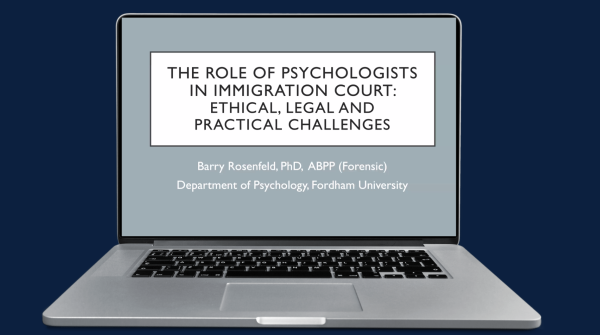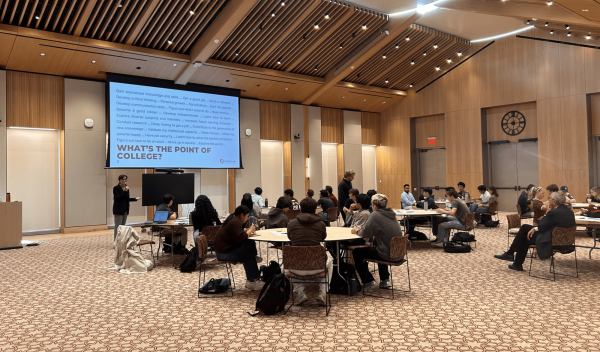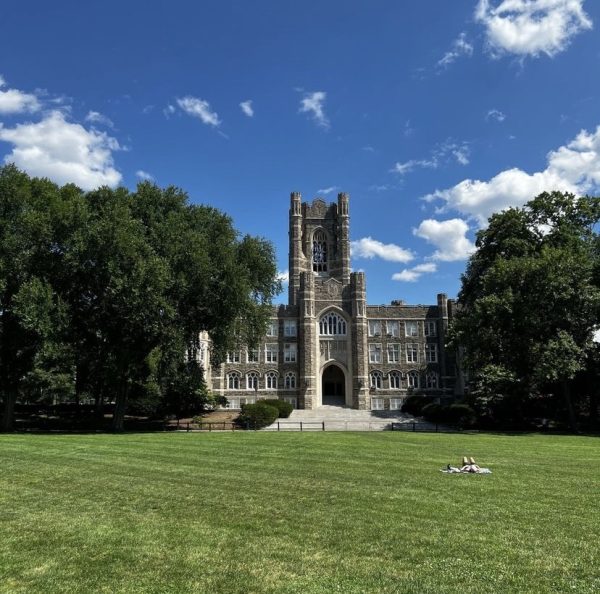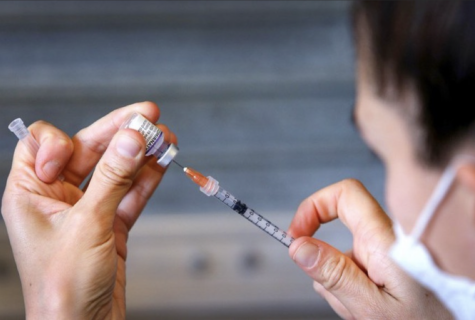Dean Mast and Dean Auricchio Grapple with Grade Inflation at Fordham

Grade inflation has become a noticeable trend at universities across the country. (Courtesy of Flickr)
More than 10 students in 15-course sections at Fordham received A’s last semester, some of which were undeserved, according to Dr. Maura Mast, dean of Fordham College at Rose Hill, and Dr. Laura Auricchio, dean of Fordham College at Lincoln Center.
Some of the students who earned A’s in these course sections also received F’s, WF’s or INC’s in their other courses, said Mast and Auricchio. This suggests that there may have been inadequate grade assessments by instructors in some of the 15-course sections.
Mast and Auricchio believe this situation points to more significant issues facing Fordham, like a rise in grade inflation and arbitrary grading.
To address the grading problem, they sent a memo to Fordham’s faculty, a regular practice, according to the two deans. However, when the “Fall 2020 Grade Analysis Report” was sent out, rumors began to spread that Fordham was pressuring faculty to be tougher on grades or assign more work to students this semester.
The memo states, “Please discuss grading policies with your faculty. The average grade was already rather high before the pandemic, suggesting that some faculty either are not challenging their students enough or are being too lenient in their grading.”
In the past few years, average course grades have increased, according to Mast and Auricchio. This may be due to grade inflation, which involves assigning grades higher than previously assigned for given levels of achievement. According to a joint email sent out by the two deans to address the rumors of stricter grading, Fordham could potentially lose its federal funding if instructors give students unearned A’s. Grade inflation can also affect how graduate schools or employers view Fordham students’ transcripts, according to the email. Mast and Auricchio explained that giving too many A’s actually “cheapens the value of the grade for the whole student body.”
This is not a problem limited to Fordham University. Though there is not much data regarding grade inflation, it has become a major issue in the last several decades.
Stuart Rojstaczer, an author and former professor at Duke University, compiled data on grade inflation from 135 universities across the country from 1940 to 2009. His results, published in 2012, display trends that suggest grade inflation has become an issue at almost all these universities. A’s represent 43% of all letter grades, and D’s and F’s are less than 10%. Overall, the total number of A’s assigned has increased 28% since 1960. Another study published in 2013 by the University of North Texas, Department of Economics, suggests grade inflation is predominantly a problem at private universities with smaller class sizes, in which professors may have less job security and rely on course evaluations from students to receive promotions or protect their current positions. The data was collected from 1683 courses across 28 departments over two decades at a large university. Its findings suggest humanities courses are the predominant source of the problem, compared to STEM courses. According to Rojstaczer’s research, grades at American institutions of higher learning seem to continue to have less and less meaning.
A rise in grade averages is nothing new for Fordham, according to Mast and Auricchio. Additionally, the average GPA and class ranking of incoming students have also increased. This could mean increased numbers of top-tier students are enrolling at Fordham, which could, in turn, explain the improvement in grades. Or it could suggest that grade inflation has also become a problem for American high schools.
Arbitrary grades have become a particular concern at Fordham, said Mast and Auricchio. The university strives for “equitable, transparent and fair practices,” they explained. However, in some cases, students at Fordham receive higher or lower grades “when transparent rubrics are not followed.”
Students who are affected by arbitrary grading are at risk of losing federal aid or loans, the deans explained. This can cause more problems during an already unusually stressful time for students. Experts have called the overwhelming feeling of 2021 “languishing,” according to a recent article by the New York Times. The term describes a feeling of aimlessness and stagnation. However, students are facing a much worse crisis. According to the American Psychological Association (APA), “We are facing a national mental health crisis that could yield serious health and social consequences for years to come.”
The APA surveyed 18,764 students on 14 campuses. Gen Z adults (ages 18-23) are facing elevated levels of stress and depression that are unprecedented, according to the data. Students also have difficulty concentrating, disrupted sleeping patterns and increased concerns regarding academic performance as a result of the pandemic, according to the Journal of Medical Internet Research.
Of the students surveyed, 87% say their education is a significant source of stress, and 67% say the pandemic makes planning for the future feel impossible. Depression and mental health concerns have increased since the fall of 2019, according to the American College Health Association (ACHA). Students reported increased levels of stress due to their financial situations. At Fordham, for example, tuition increased by 3.33% in 2020, putting an extra cost on students whose families may have been impacted by the economic downturn and mass job loss caused by the pandemic.
Mast and Auricchio said mental health and student well-being are being prioritized and actively discussed among deans and faculty. “In our colleges, we’ve stepped up communication (weekly emails) and have offered opportunities for community building,” they explained. Counseling and Psychological Services (CPS) at Fordham has also expanded resources and support for students during the pandemic, according to the deans.
“As deans, we encourage faculty to balance compassion with rigor,” said Mast and Auricchio.














































































































































































































